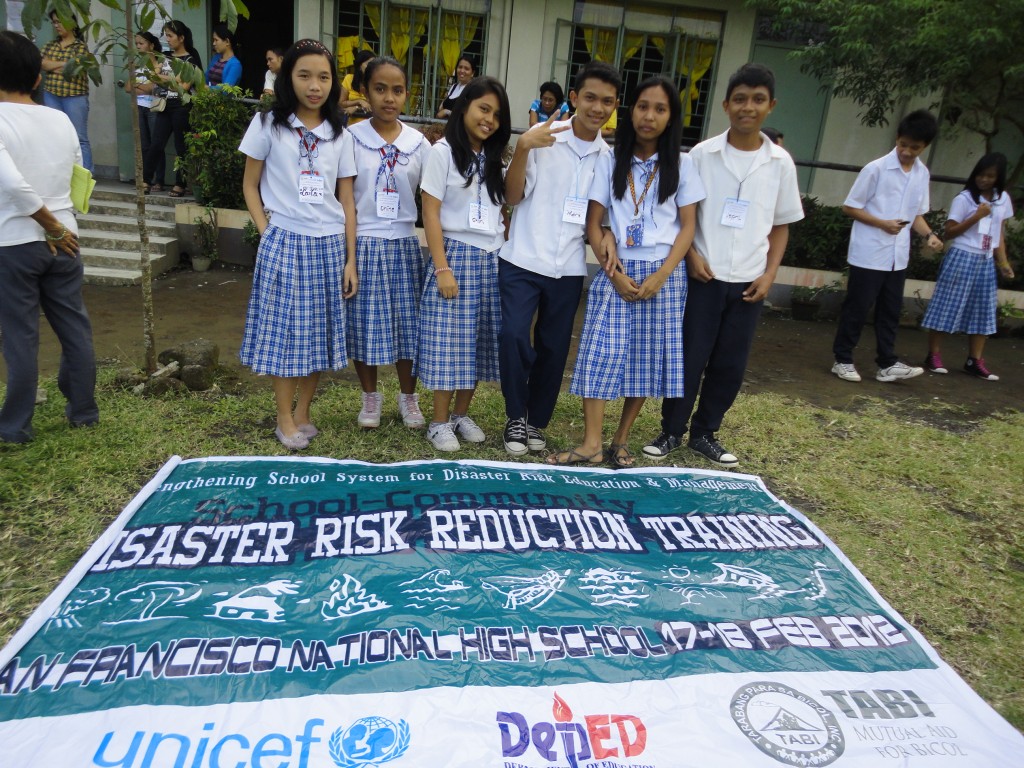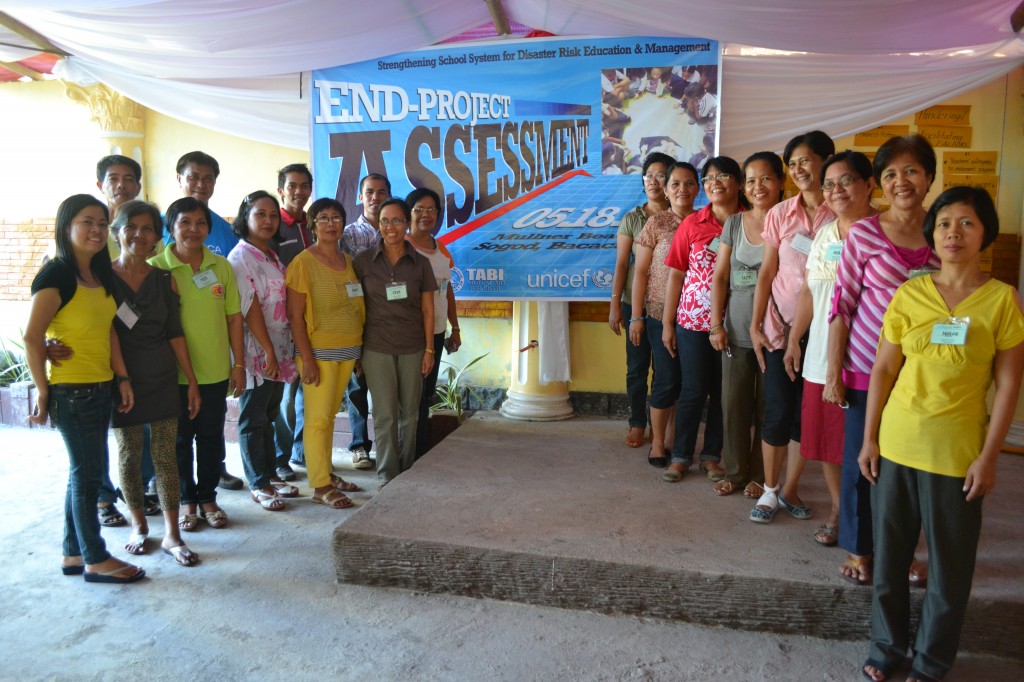Bounded on the east by the Pacific Ocean, on the northeast by the Lagonoy gulf, and on the west and southwest by the Burias Pass, the province of Albay is one of the most disaster prone areas in the Philippines. The local government data shows that around 20 typhoons visit the province every year, four or five of which are expected to hit the province directly. It is also susceptible to volcanic tremors and lahar flows as it houses an active Mayon Volcano.
MALILIPOT, Albay – The view from a primary school in this town shows the scenic Mayon Volcano. Taunted as the world’s most perfect cone, it is breathtaking even on a rainy afternoon. The serene view, however, can also be a threat as Mayon, also one of the world’s most active volcano, periodically brings havoc to communities within its proximity.
Lahar flow usually damp farming communities within the five kilometer radius of Mayon once it acts up which affects the livelihood and the everyday living of the people in the nearby communities.
The effect of such calamity has driven UNICEF to sponsor a Disaster Risk Reduction-Teaching and Learning Circle (DRR-TLC) program which targeted six pilot schools in this town. “This program serves as a corps of in-school DRR educators tasked with strengthening the capacity of the entire school system through sustained DRR education and management,” said Maricris Binas, Executive Director of Tarabang para sa Bicol, Inc. (TABI), the local non-government organization which facilitates the DRR-TLC program in the area. The program’s main anchors are public school teachers who are in a “strategic stable position” in the school community to sustain the program for the duration of their tenure, Binas explained. It involves all stakeholders in the community including the teachers, administrators and students in the school system, the parents and teachers associations and the barangay council.
Center for evacuation
San Jose Elementary School, which stands within the nine kilometer radius of Mayon, serves as an evacuation center for nearby communities during calamities. Evelyn Volante, DRR coordinator and Grade 5 teacher-adviser, explained that there are three levels of awareness and preparation both for the affected community and their own school system.
When the local government agencies raise alert level 1, the DRR-TLC only continuously monitors volcanic activities of Mayon. However, alert level 2 already means they have to prepare the school for possible evacuation of nearby communities. “We have to prepare our pupils for the arrival of evacuees because they will essentially be displaced as classes are held outside the classroom,” Volante said.
Evacuees start to troop in the school premises once the alert level reaches 3. While the evacuees occupy the classrooms, Volante said their classes are held inside tents provided by the local government. Since students are also part of the DRR-TLC training program, student-volunteers are trained to assist evacuees in their school.
As part of the training, elementary pupils as young as 9-years old are taught on how to help maintain the cleanliness and sanitation in the school compound, how to assist in relief giving and facilitate children activities. “We train and encourage our pupils to entertain the evacuees especially the children to lessen the stress and boredom while living in a non-formal temporary settlement,” Volante said.
Apart from giving temporary settlement, San Jose Elementary School also serves as the temporary school of pupils whose schools are located in the affected areas. “We have to shorten class hours to accommodate our pupils in the morning and hold classes for the student-evacuees in the afternoon,” Volante said.
Debriefing
After a calamity, Volante said trained teachers conduct debriefing sessions for their students. As part of the process, the pupils likewise help in gardening and fixing the school grounds. As part of their duty, parents also help in the reintegration of the school. They help in fumigation of the school grounds and disinfection and general cleaning of every room.
Integration
Another facet of the DRR-TLC program is its integration in the school syllabus. Although DRR concepts have been integrated in various subjects such as HEKASI, Science and Math, the teachers’ involvement as TLC has helped them integrate DRR in their lessons. “As a science teacher, we also integrate the DRR with our lessons particularly in general science,” said Jean Vibar, teacher from the Marcial O. Ranola Memorial School (MORMS), another pilot school of the DRR-TLC program. “I do this as an application of my learning on what to do before, during and after a disaster. This would be a big help for us teachers and students and we also relay the information to the parents,” she added.
The DRRM is also integrated in the School Improvement Plan (SIP) and the Annual Improvement Plan (AIP). In this program, the DRR-TLC facilitates DRRM action planning with school and community stake holders who, in turn, submit reports to the school head. These reports are used as a guide on how to integrate the program to the SIP and AIP.
Roll-out
 As part of the program, pilot schools are encouraged to roll-out the DRR-TLC training to other schools in this town.
As part of the program, pilot schools are encouraged to roll-out the DRR-TLC training to other schools in this town.
The program coordinator of MORMS School-Community Risk Reduction Committee (MORMS-SCRRC) underwent dissemination information in Daraga National High School while the SJES-SCRRC rolled-out the training program to the Bacacay Elementary School.
“We helped them do a hazard map to identify the hazard areas in the school and community,” said Vibar.
The roll-out schools and communities thought of strategies on how to cope up with different types of calamities and were advised to have early warning devices such as siren, whistle or megaphone.
The roll-out training in Bacacay Elementary School, however, had specific training on tsunami and flood management as it is in the coastal area, said Ms. Volante. She added that the Bacacay community had to likewise identify hazard areas in the school and community as the area is always flooded. “We taught them to plan on how to mitigate whenever a calamity arises to lessen the danger to the people, their livelihood and their belongings,” she added.
The training would help the school and community identify the capacity and vulnerability of the area and would also know the possible channels where help can come from before, during and after a calamity, added Volante.
“The geographical location of our region tells us that calamities will definitely arise. This is the main reason why we always have to be prepared,” Volante said. ##


Leave a Reply